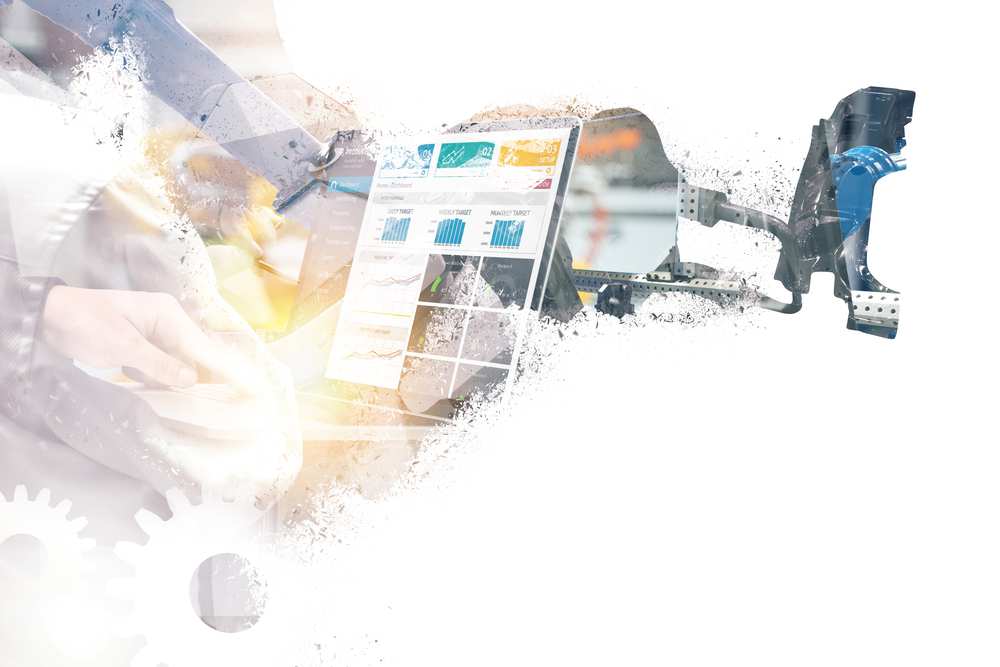As Strategic Research Actuary for RGA’s Global Research and Data Analytics (GRDA) team, Julianne Callaway researches emerging areas of interest to the insurance industry.
Her insights on wellness, wearable technology, genetics, and other strategic research initiatives are shared with clients in presentations, white papers, and articles.
We sat down with Julianne to discuss the “Internet of Things” (IoT) and its implications for insurers, a subject on which she presented at the Second Annual Internet of Insurance Conference.
1. In what ways is IoT impacting the life insurance industry?
Smart homes, telematics devices, autonomous cars – it is clear IoT is having a big impact on the property casualty insurance industry. IoT has enabled insurance products that incentivize consumers to prevent losses, and that provide value to consumers beyond payment of claims. But IoT has impacted life insurance as well, in large part because technological advancements have changed consumers’ expectations regarding how they interact with businesses.
IoT technology has facilitated the development of more personalized insurance products. For example, many life insurers are interested in offering wellness-related discounts to consumers who engage in healthy activities. Wearable technology allows for these discounts on insurance products by quantifying and verifying the activity associated with healthy lifestyles.
Digital solutions are increasing the number of life insurance policies that are sold online and through mobile technology. Online insurance sales are enabled by faster life insurance policy approval, often without the need for lab work or medical exams. Advanced analytics and the use of additional data sources, potentially including data from IoT devices, have made a triaged approach to underwriting possible, allowing for an accelerated underwriting decision while maintaining approximately the same level of risk assessment the insurer requires. The ability to “pre-qualify” an applicant based on additional data sources brings the underwriting decision earlier in the purchasing process and satisfies consumer demand for a quick transaction.
Consumer expectations have changed as connected technology has become ubiquitous, which has affected an industry as slow to change as insurance. Connected devices have allowed insurers to evolve their offerings to meet these expectations through loss prevention, personalization of the insurance product, and the ability to purchase an insurance product digitally.
2. How are life and health insurers applying the new data made available by IoT to improve risk assessment?
Just as telematics devices have made it possible for auto insurers to provide “pay as you drive” insurance products, life insurers have explored using wearable device technology to enable activity-based insurance discounts. But activity rewards are not limited to the fit and healthy population. Fitness devices also have the potential to expand insurability to people who are demonstrating active management of chronic diseases such as diabetes.
Another example is technology that can help seniors to live independently in their homes for longer, thus potentially providing insights and value for insurance coverage, such as long-term care. RGA has a strategic partnership with K4Connect, which developed a system that connects electronic devices and appliances in the home as well as monitors the activity of the user. These devices have the ability to identify patterns of behavior and can inform users of potential issues, thus preventing accidents in the home and possible further physical decline.
Data from wearable fitness devices as well as smart home technology can help life and health insurers better understand the policyholder risk. These devices can also encourage healthy behavior that will not only extend life, but improve the quality of life. In addition, by understanding patterns of normal behavior, the devices can help improve the users’ quality of life as well as the safety of their surroundings.
3. What are the biggest challenges insurers face in embracing IoT?
Perhaps the most fundamental challenge to adopting IoT is regulation. Insurance regulators must balance the desire for products that meet changing consumer expectations while maintaining the financial stability of the insurance provider and protecting consumer privacy. Reliance on new technology and new data streams can be difficult for regulators to evaluate as there is no strong historical record of data to support changes to rates and products.
Further, as insurers come to depend on additional data sources, data security becomes increasingly important. Data breaches and improper treatment of data pose substantial reputational risk to companies, which is certainly not unique to the insurance industry. Beyond the security needs, there are requirements to store, process and connect data sets to achieve the most value from the data. Insurance companies must have sophisticated computer systems in place to use these new data sets effectively. Large insurers with legacy systems dating back many decades face significant challenges to adapt to changing environments.
The insurance industry provides protection to its customers and must safeguard that trust through financial stability as well as the protection of data assets. This duty has historically contributed to a measured and slow response to change. However, insurers must consider the influence technology and data will have on their ability to maintain relevance in a digital world.
4. In what ways do you think IoT will impact the insurer-customer relationship moving forward?
The insurance relationship of the future will involve a different consumer as well as an expanded ability on the part of the insurer to educate, inform and engage with customers.
Changing demographics have heavily influenced the insurance customer profile. The millennial generation is a growing consumer segment that has very different buying expectations than previous generations. This generation is the first group of digitally native consumers – they research and purchase products online, benchmark a company’s products against those of its competitors, and trust the advice of their peers rather than industry professionals. They will bring these same values and practices to the insurance buying process.
However, digital capabilities have impacted the insurance industry beyond efforts to satisfy the expectations of millennials. Consumers who are confused by insurance products or have coverage questions can communicate with insurers through robo-advisors and chat bots. These tools let consumers engage with insurers on demand, with the convenience the internet offers.
In order to communicate with consumers, insurers will need to expand their communication methods to reach consumers digitally, as well as adapt their message to a new generation.
5. How can insurers stay up to date amid IoT’s accelerating evolution?
The speed of technological change has made it imperative for insurance to innovate the business model. However, the pace of change also brings risk if the industry responds too slowly or adopts a specific technology that becomes outdated.
Insurance companies can safeguard against obsolescence by creating programs that utilize a wide range of technologies. For example, a life insurance wellness program may utilize wearable technology to verify activity. However, the program should be device-agnostic. By allowing for customer usage of several devices, the insurance program will continue to function even as technology evolves. Insurers must create robust frameworks that will enable technology-agnostic insurance products that can more easily adapt over time.
Companies must manage risk posed by technological advances by expecting continual technological improvements. Research departments can help to stay ahead of trends and inform company strategy so that insurance products change with advancements in technology.
Additionally, leveraging technological advances will require strategic partnerships with smaller, more nimble companies with expertise in different areas than the traditional insurance business. As new technologies lead to opportunities to innovate traditional insurance product offerings, the industry can partner with the companies that are at the forefront. In order to stay relevant in a changing technological environment, insurers will need to establish a network of diverse partnerships.
Insurers can guard against investing in obsolete technology by anticipating and expecting continued rapid advancements. Allowing research teams to inform strategic decisions, designing programs that are not dependent on specific technologies, and establishing a robust portfolio of partnerships are ways insurers can adapt to a changing technological environment.



